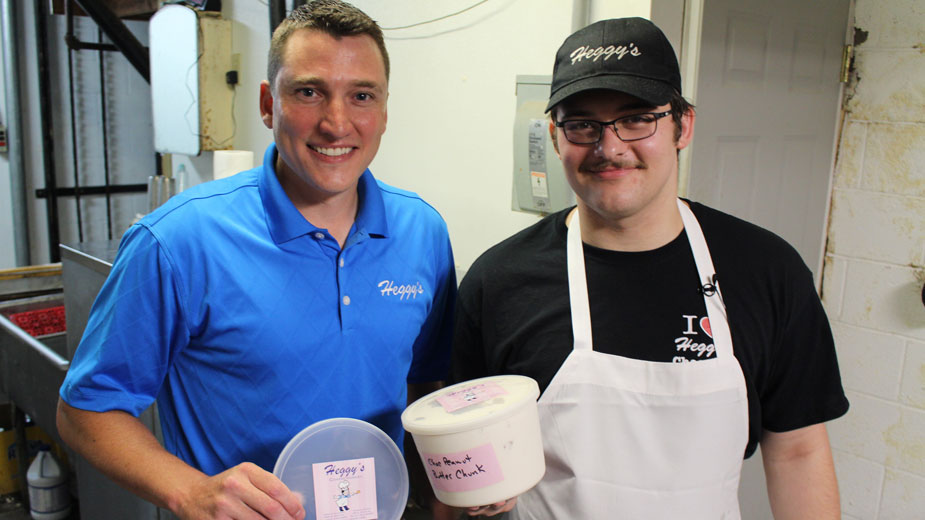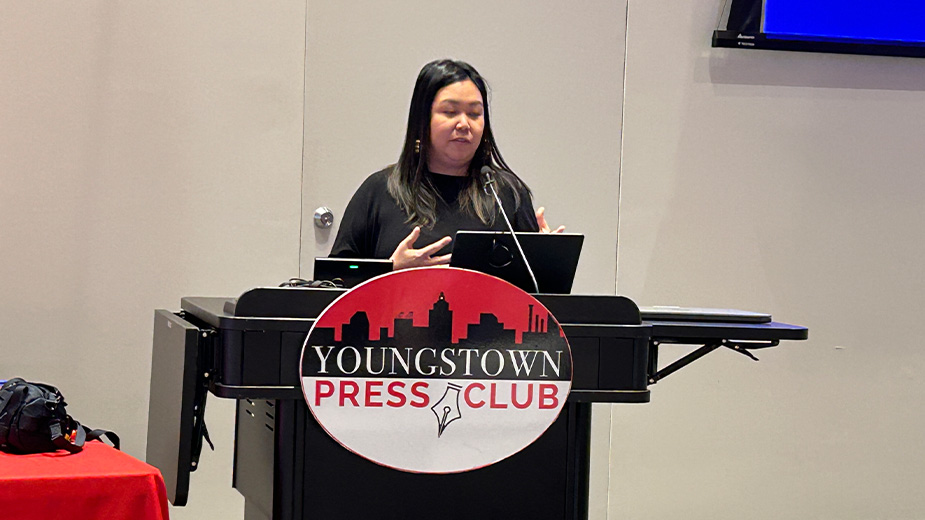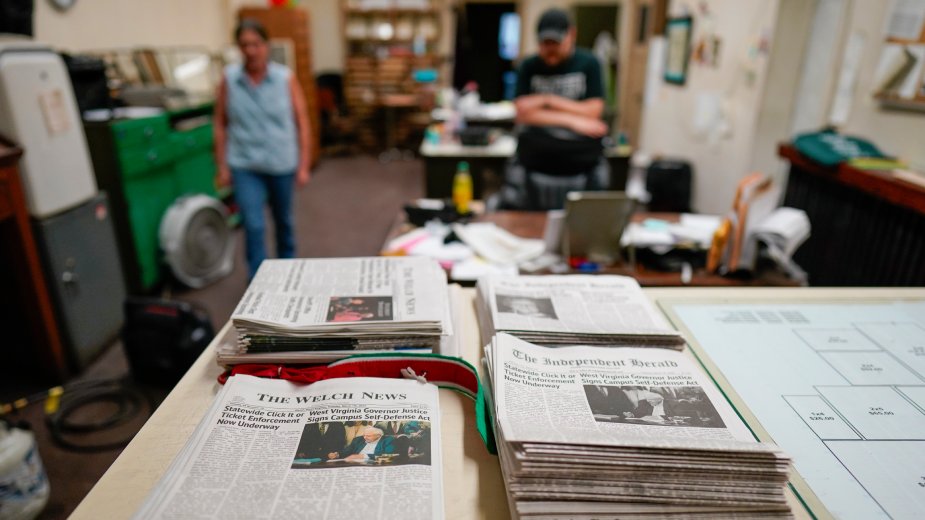Ice Cream Shops Thrive on New Flavors, Nostalgia
YOUNGSTOWN, Ohio – There are few who would argue the best way to beat the summer heat is ice cream. Whether it’s in a cone, bowl, sundae or float, it’s a hallmark of summer across the country. And locally, there are many makers of ice cream offering up frozen treats to sweltering customers.
There are the old standbys – vanilla, chocolate, strawberry – but new flavors are always popping up.
After a trip to a food show in Cleveland last winter, the owners of BoJo’s Creamery added kettle corn to its freezer.
“I thought it would be a one-and-done thing but we’ve been carrying it since February, making it once or twice a week,” says Bob McAlister, who owns the store in Boardman with his wife, Debbie. “It’s a hit at our store.”
Local nostalgia is also boosting business. About 65% of the sales at BoJo’s are for Strouss malts, made famous by the downtown Youngstown department store during its heyday.
“In the basement, Strouss used to have a little malt stand under the steps and they did chocolate in a glass with a metal spoon,” he says. “And nine years ago we just tried it and it’s been a success at our store.”
In New Wilmington, Pa., Duke Whiting says the top sellers at Whiting’s Dutch Isle are butter pecan and black raspberry.
In New Waterford, toward the top of the list at Baker’s Golden Dairy are cinnamon bun, banana and Cow Kicks, a caramel ice cream with Twix candy, says manager Kasey Hudson.
For whatever flavor is popular, local confectioneries dedicate themselves to making high-quality ice cream. And for that, there’s only one way to start: butterfat. Those who use milk that’s more than 14% butterfat, such as Baker’s, Dutch Isle or BoJo’s, fall into the “super premium” category of ice cream, ahead of mass producers such as Ben & Jerry’s or Haagen-Dazs, which are categorized as “premium” with between 12% and 14% butterfat. A higher butterfat content means a creamier texture and stronger flavor.
At Heggy’s Confectionery, based in Alliance with a second site in Salem, making ice cream begins with adding an ice cream mix to the milk, which is then pasteurized and homogenized – essentially, heated up to kill bacteria before being stirred to make sure all solids are mixed in. From there, the mixture is cooled down slowly before being put into a freezer that adds in air to ensure it doesn’t get too hard during freezing.
“It’s 2 1/2 gallons per bag, and I usually go through about six cases of two bags,” says manager Noah Myers. “There’s rough guidelines, but it’s mostly just eyeball.”
Adds Hudson, “If you need more flavoring, add more flavoring; if you need more goodies, add more goodies. It’s all batch froze; so small batches is what it does and we can kind of mess around with it a little bit at a time.”
If quality ice cream is made but not taken care of properly, the product may not turn out as well, Whiting adds. Having a blast freezer, extreme cold storage and knowing how to bring the ice cream up to the right serving temperature are the key.

According to the International Dairy Foods Association, June and July are the busiest months for ice cream production. About 1.54 billion gallons of ice cream and frozen desserts were produced in the United States in 2015, the most recent year with data available.
The ice cream industry in the United States contributes more than $39 billion to the economy and creates more than 188,000 jobs in communities across the country, according to the association.
Most U.S. ice cream and frozen-dessert manufacturers have been in business more than 50 years and many remain family-owned businesses. Some of them, such as Heggy’s, has transitioned to new ownership over the years. There, co-owners Chris, Ryan and Patrick Sell took over the business from their father in 2016, who in turn had taken it over from his grandfather in the 1970s.
“We try to make things as homemade as possible. It sets us apart from the fast-food chains that don’t really do homemade things,” Chris Sell says. “People know us and really try to support local business. I think that’s key in our success.”
There are also many new players in the local ice cream business. Dutch Isle opened in 2013 and Baker’s joined the market not too long after.
Competing with the long-standing and well-known names such as Handel’s and Dairy Queen makes the ice cream business highly competitive, Baker’s Hudson says.
Forty-five percent of the business at Baker’s Golden Dairy is the ice cream, although she’s careful about how much is sold as she’s the only one who operates the machinery.
“When I get time, I do the ice cream,” she says. “We are in a few stores with it, but I try not to push it a whole lot because I don’t have time. We started [selling ice cream] 2 1/2 years ago and since then, we’ve grown. We also supply ice cream shops with ice cream as well.”
Beyond serving ice cream in a cone or bowl, frozen treats are a big business as well. Baker’s supplies High Octane Coffee Co. with ice cream for its coffee-free milkshakes, made with or without a shot of espresso.
“The coffee milkshakes we do with cold brew, which is the Nitro Blast. Or we can do a milkshake with a shot of espresso,” says High Octane manager Gabby Stubbs, who notes that ice cream makes up about a quarter of sales at the cafe. “It ends up being like a frappuccino and we get people who come in here at 7 a.m. and get them as a treat.”
Josh Medore and Marah Morrison contributed reporting to this story.
Pictured: Chris Sell is the third-generation co-owner of Heggy’s Confectionery, based in Alliance. With him is Noah Myers, who manages the store in Salem.
Copyright 2024 The Business Journal, Youngstown, Ohio.



